|
|
|

![]()
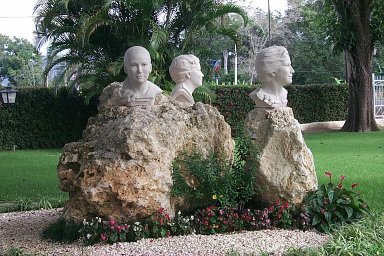
The story of the Mirabal sisters is familiar to all Dominicans. In the days of the dictator Trujillo, there were four sisters, Patria, Dedé, Minerva, and María Teresa. They grew up in a family of privilege, a family favored by the Trujillo regime -- a family which was therefore supposed to be (or at least act) essentially oblivious to the government's rampant corruption and disregard for human rights. Simply put, those who were critical of Trujillo were "disappeared", and there were plenty of people willing to turn in neighbors, employers, or even family members for an offhand remark or joke. People lived in fear of a black Volkswagen of the SIM -- Trujillo's secret police -- driving up to their home.
In the course of the 1950s, underground anti-Trujillo movements began to proliferate. This was dangerous business: resistance members who were caught were imprisoned, tortured, or brutally killed. One by one, Minerva, María Teresa, and Patria Mirabal became involved in the resistance movement. Known as "las Mariposas" ("the butterflies"), the Mirabal sisters quickly became inspirational leaders of the resistance.
The government imprisoned the husbands of the three sisters, hoping that that would silence them. It did not. On the evening of November 25, 1960, as the Mirabal sisters were returning home after visiting their husbands in the Puerto Plata prison, soldiers ambushed their jeep. The three women and their driver were strangled and clubbed to death, and then, in a feeble effort to cover up the murders, their bodies were put back in the jeep and rolled over a cliff.
The public did not believe the government's story of an "accident" claiming the lives of the Mirabals. Historians consider the murder of las Mariposas a turning point in the downfall of Trujillo: popular support of the dictator waned, the resistance movement gained momentum, and the Catholic Church became more openly critical of the regime. On May 30, 1961, Trujillo was himself ambushed and assassinated.
![]()

Dedé Mirabal has dedicated her life to preserving the memory of her slain sisters. The Mirabal Museo, located on the outskirts of Saucedo, is a fruit of her efforts. The second home of the Mirabal family, the museum displays the family's personal effects. Alongside Patria's teacup collection and María Teresa's embroidery, however, are the artifacts of the sisters' murder: the shoes, handbags, and papers, as well as the long braid of hair which Dedé cut from María Teresa's head in the morgue. The juxtaposition of the mundane and the tragic in this museum is very powerful.
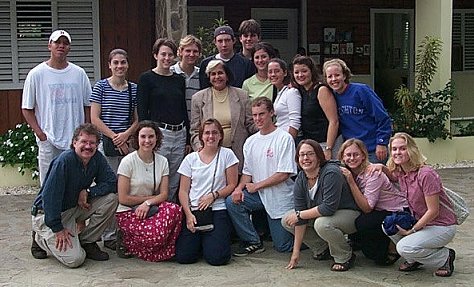
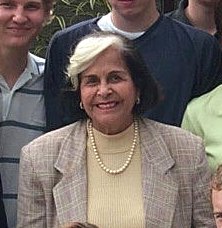
We were very fortunate in meeting Dedé when we arrived. She warmly greeted each of us. It's not often that one meets a national legend!
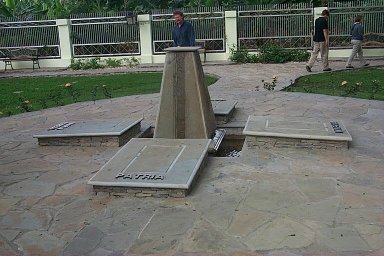
November 25, 2000 marked the fortieth anniversary of the Mirabal sisters' assassination. On this day their remains, and those of Minerva's husband Manolo (killed in 1963) were moved to this gravesite on the museum grounds.
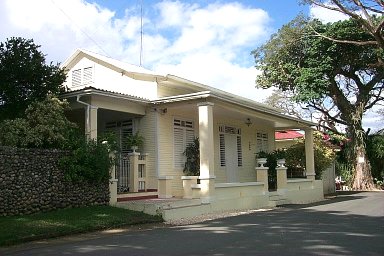
After leaving Saucedo, we went a few miles north to the Mirabal family's first home in Ojo de Aqua. Not many roads in this area are paved, but the past president of the Dominican Republic made sure this road to the Mirabal house was!
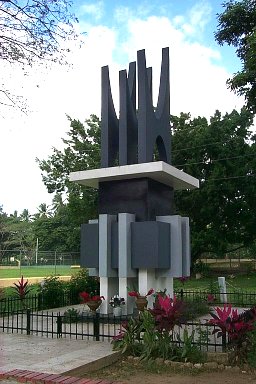
This monument to the Mirabal sisters is in a small park across the street from the Ojo de Aqua house. Note the three "butterflies" on top.
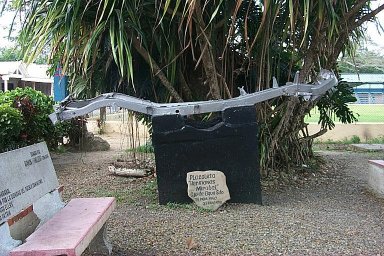
The chassis of the jeep is also preserved in this park, mangled front and rear from the staged crash.

Formal and informal tributes to the Mirabal sisters abound in the Dominican Republic. In Santo Domingo, an obelisk that had been intended to honor Trujillo was converted into a memorial to the sisters. I found this bit of graffiti about two blocks from the Hogar Luby orphanage in Santiago.